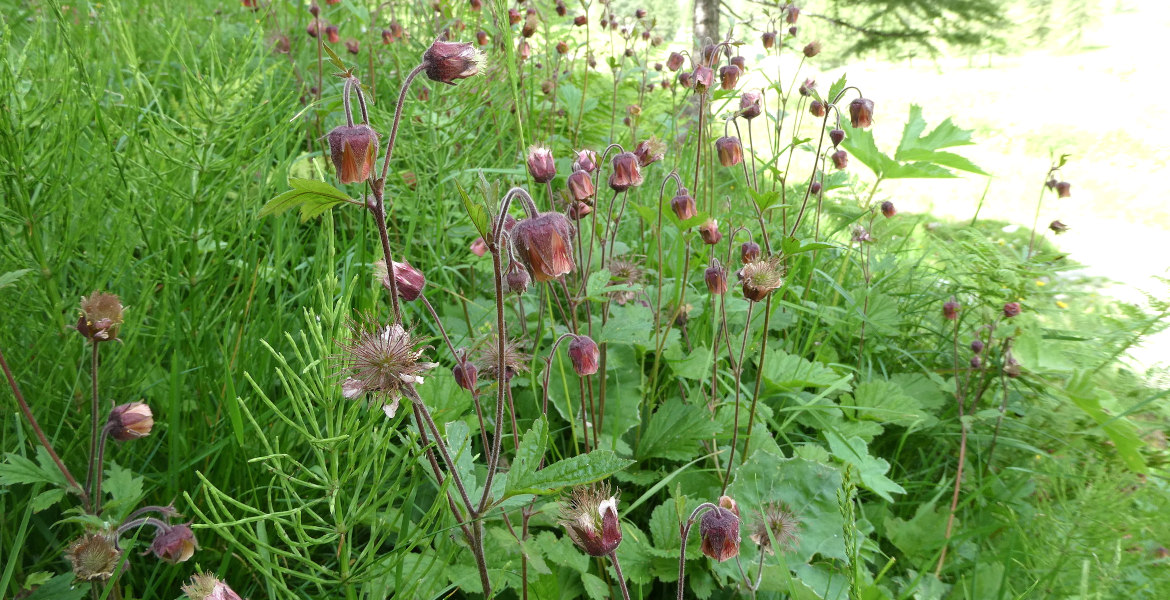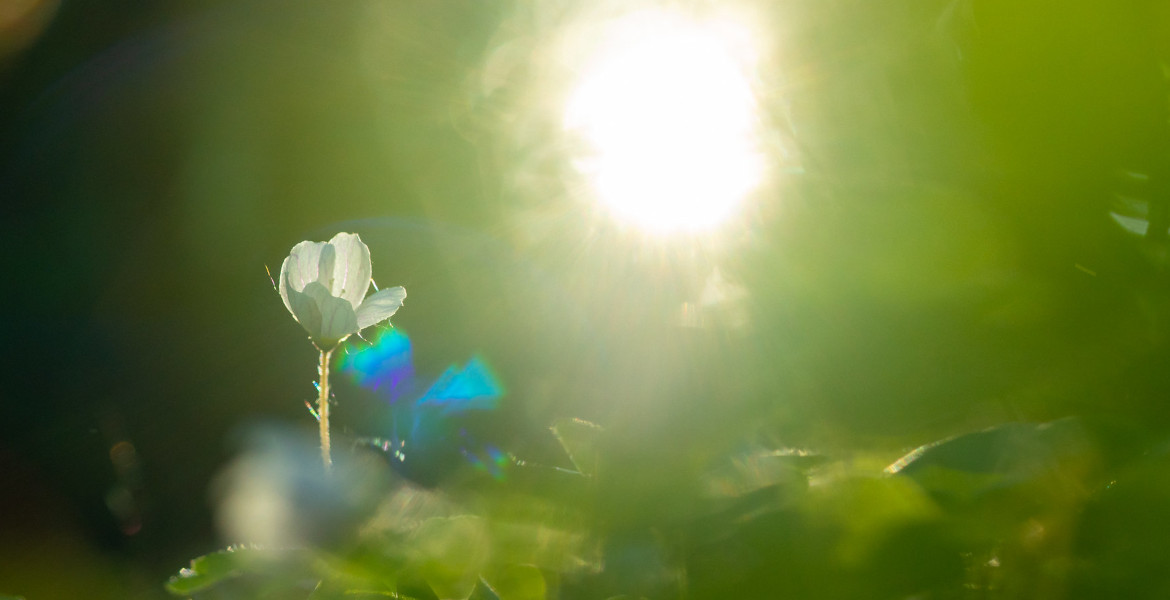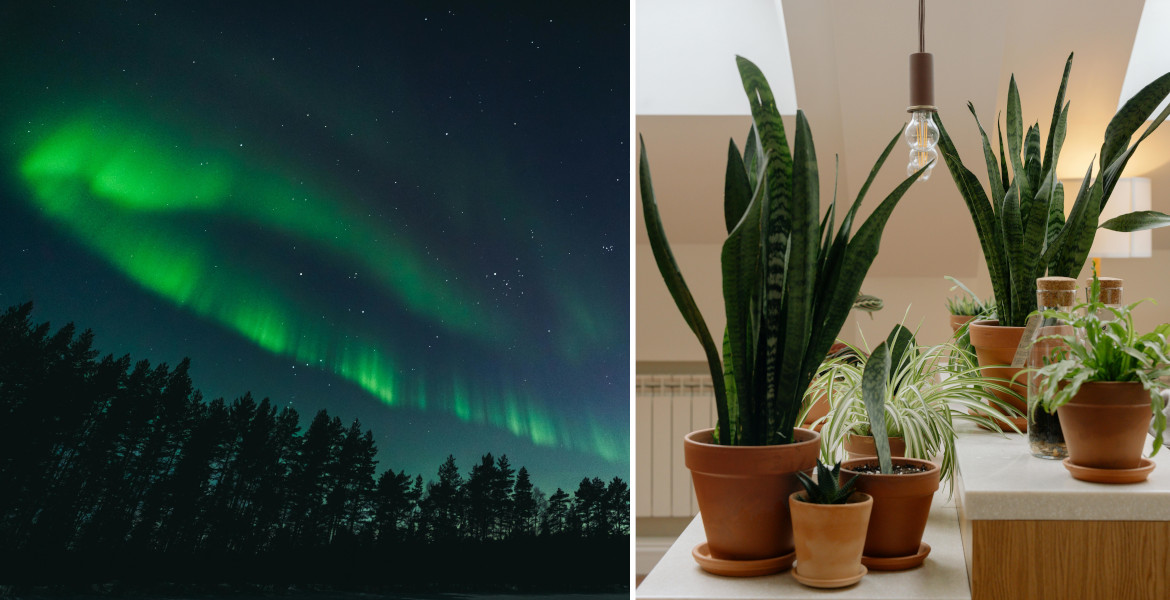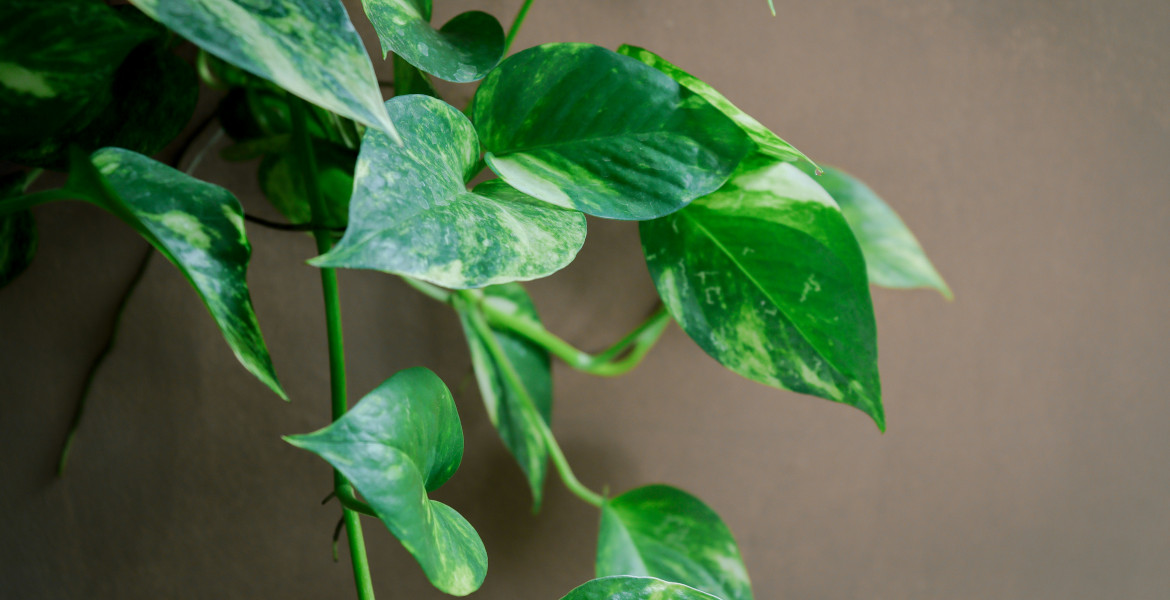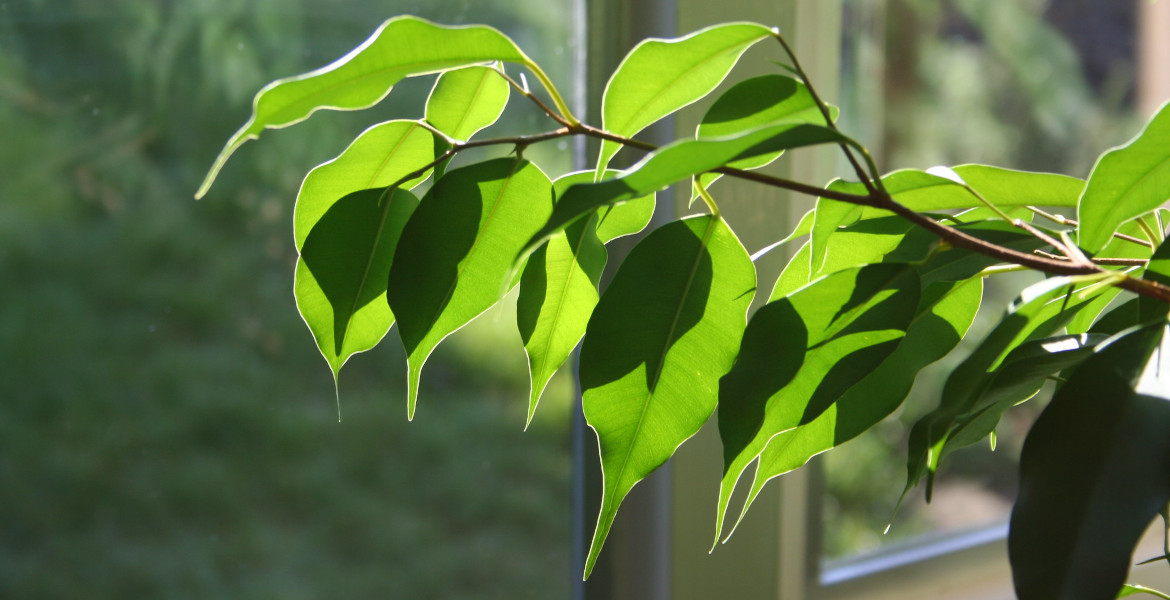Many people remember the sour taste of wood sorrel, or how dewdrops filled the grass on the lawn in the morning, but over the years they have forgotten that these plants are actually edible. In the forest, on the lawn, and even in the city, there are lots of herbs and other plants that can be eaten during the green season in spring.
However, it is important to remember that Nordic plants can often be poisonous, so you should never eat anything you are unsure about.
The darkness is receding and light is returning to the Swedish landscape. With light, sun, and more warmth, the earth is slowly thawing and the leaves are spreading their buds. The green leaves are not only a delight that brings spring feelings, but also contain a lot of edible plants. In Sweden, there is plenty to eat in nature besides the well-known lingonberries and the wide variety of mushrooms that attract people to the forest. There are also weeds, trees, bushes, and flowers. In this article, we take a look at some of the edible herbs and leaves of spring.
In Sweden, the forest is there for everyone through the right of public access, but you should always respect both the landowner and nature. For some things, such as trees, you need the landowner's permission to pick, and you should not pick more than you will use. It is also important to think carefully when you are in the forest, as it is easy to get lost.
Many edible plants are found not only in forests but also in cities, but you should always avoid picking them along roads due to exhaust fumes. If necessary, you can use Stans Flora to learn how to recognize different plants. It is important to remember never to eat anything you are not sure about, as there are many poisonous plants in Sweden that can have disastrous consequences if ingested. Read up, look carefully, and never guess.
Blueberry leaves (Vaccinium myrtillus)
Harvest: May to June
Most people know that blueberries are edible, but not everyone knows that the leaves are edible too. Blueberries themselves are very healthy, but the leaves also have many beneficial qualities. Among other things, they contain flavonoids, which act as effective antioxidants, as well as neomyrtelin, which is said to be good for type 2 diabetes, according to Läkeörter.se. The leaves contain vitamin C and chromium.
The best way to use blueberry leaves is to make a decoction, i.e., tea. Fresh leaves are perfectly fine to use, but you can also dry them and use them during the winter. Blueberry leaf tea is said to counteract diarrhea and stomach problems, as well as have blood sugar-lowering properties and be good for urinary tract problems.
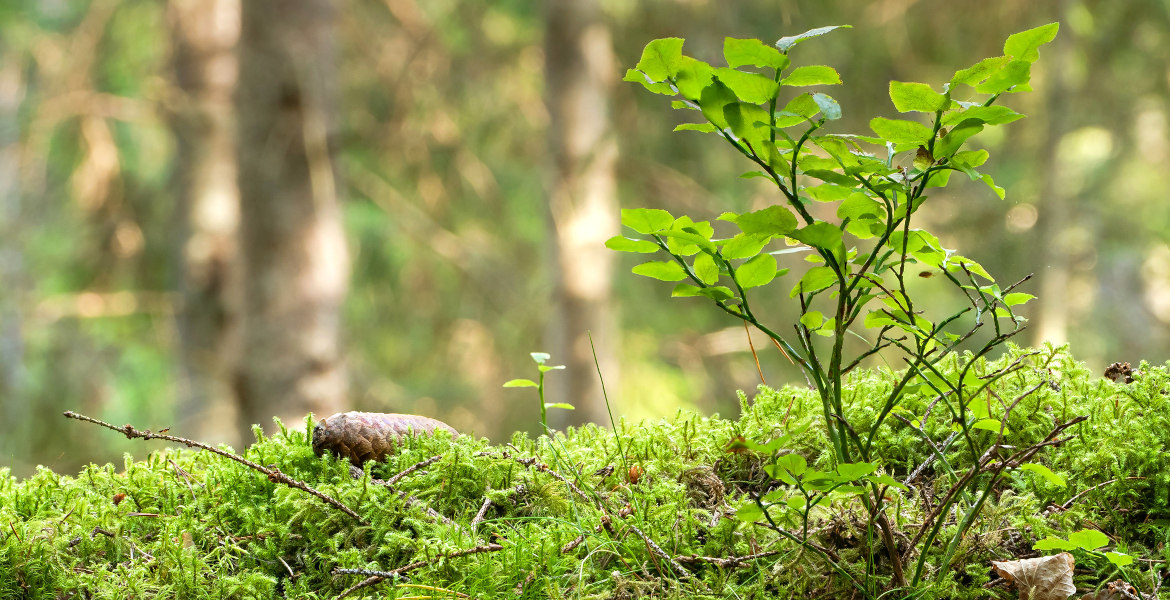
Shepherd's purse (Capsella bursa-pastoris)
Harvested: April to November
The plant has a slender stem with white flowers and grows in meadows. Along the stalk there are fruit pods that are slightly heart-shaped. It is one of the most common weeds and is found throughout Sweden, except in the mountains.
You can eat the whole plant, except the root. It is said that the shepherd's purse was already used as food in the Stone Age.
The fruit pods in particular have a taste reminiscent of ginger and mustard. The young leaves can be used in salads, or they can be dried and used later in cooking. One tip is to make spiced butter from the unripe fruit pods.
The shepherd's purse is said to have a hemostatic, bactericidal, anti-inflammatory and vasoconstrictive effect, making it effective in wound care. It can be dried and powdered, for example, and then used and sprinkled directly on wounds to stop bleeding.
It is also high in iron, calcium, vitamin K and vitamin C. It can be confused with the field pennycress, but it is also edible. It is also said to have been used against chills in the past.
Avoid eating it during pregnancy and if you have problems with kidney stones or kidney disease.

Wood sorrel (Oxalis acetosella)
Harvested: April to October
This classic herb likes to grow in wetter woods and has three heart-shaped leaves that resemble clover. Both flowers and leaves can be eaten. Its flowers, however, are similar to those of wood anemone, which is poisonous to eat, but the difference is that wood anemone flowers have white seed stalks and pink veins. Both also flower around the same time in May. So look carefully to make sure it's not an accidentally picked-up wood anemone, especially if children are around.
The wood sorrel is often called the barometer of the forest because it sheds its leaves when it rains.
The herb has a sour taste, which comes from the poison oxalic acid. However, eating foods with oxalic acid is not toxic, but you should not eat large amounts (which is difficult to do with resin acid). If you suffer from kidney stones, you should not eat anything with oxalic acid in it. The acidic taste is suitable as a flavor enhancer in sauces or salads, for example. It is also good in desserts or mixed in water for a mealtime drink. Or why not go for a snack on your walk?
It grows throughout Sweden, except in northernmost Norrland.
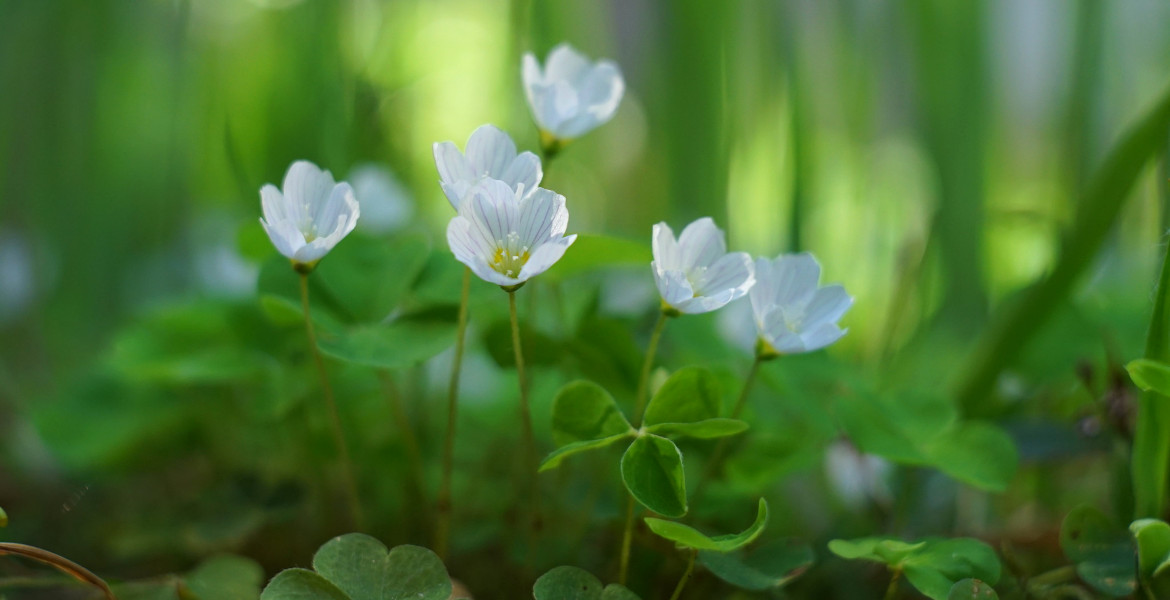
Lady's mantle (Alchemilla vulgaris)
Harvested: May to July
Perhaps as a child you used to pick lady's mantle from the lawn and drink the morning dew that collected, if nothing else, the common plant is probably recognized by most people. It is found throughout Sweden and is common, in addition to lawns, also in meadows. It can also be found in the forest.
The leaves are bowl-shaped and it has small yellow-green flowers.
The name Alchemilla comes from the belief that the water droplet formed in the plant's bowl was an important ingredient for alchemists.
Traditionally, the plant has been used as a medicinal herb and is said to be good to drink during pregnancy. It is also said to have been used after childbirth as the tannins in the plant can help tighten the skin, so it has also been used as a compress for wound healing. For this reason, it is also said to be beneficial to drink lady's mantle decoction during heavy menstruation.
It has also been called "a woman's best friend" as it is said to be good for facilitating regular menstruation and also relieving menopausal symptoms.
It also contains essential oils and saponins, which together with the tannins can prevent chapped skin.
Both leaves and flowers can be eaten. Cut off the leaves at the base and the plant will continue to grow. Dry and use as a tea, or as a salad topper. Make a decoction and then use as an astringent toner.
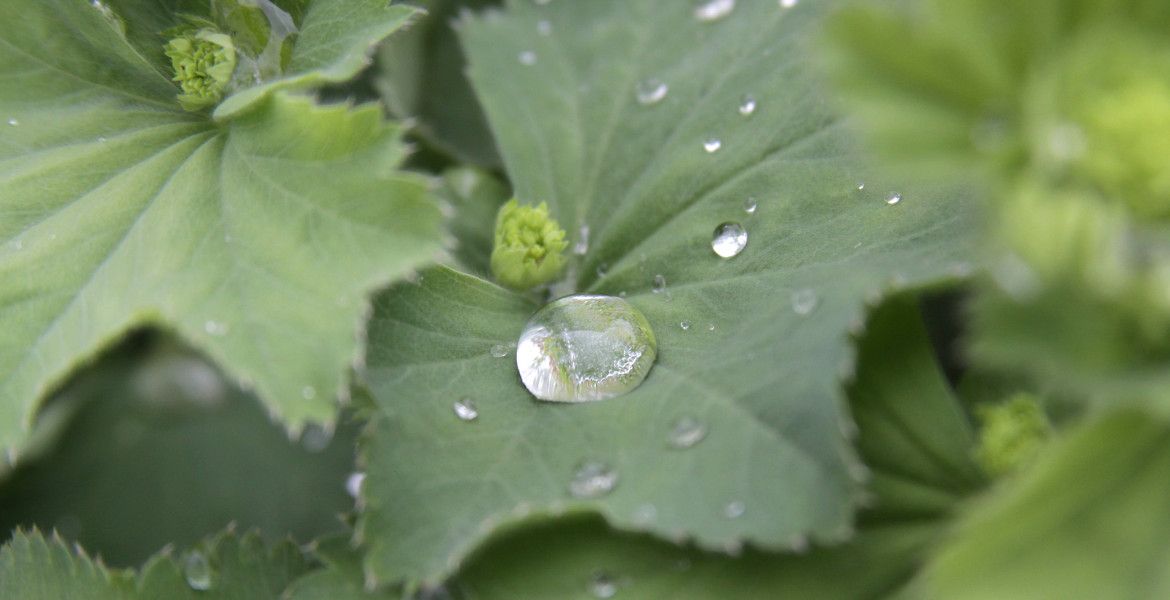
Birch leaves (Betula spp.)
Harvested: May to June
The white-black tree is easy to recognize. In spring, the leaves start to bud on the tree and this is when they are best to pick. Birch leaves are useful both internally and externally.
Birch leaves have long been used to give the body an extra boost after winter. The leaves can be used as a tea and provide a range of benefits to the body. Among other things, they are said to be high in vitamin C, but also to help support the kidneys and clear waste products from the body. The leaves are also said to be anti-viral and anti-inflammatory, and good for rheumatism.
Furthermore, you can also make an infusion of the leaves and use it as a toner, which is supposed to help clearer skin. It is also said to be good for eczema. Why not take a bath with birch leaves to benefit the whole body?
If you want to try a natural shampoo or household cleanser, mix a liter of water with a deciliter of fresh leaves. Leave for 24 hours, stirring occasionally. After that, you can strain the leaves and it should have created a form of soap. You can use this for your hair or to scrub with.

Stinging nettle (Urtica dioica) and whitetop (Lamium album)
Harvested: March to August
Stinging nettle is found throughout Sweden, grows a little everywhere and should be picked with gloves because it burns. It can be picked as a shoot but also as a fully grown plant.
The plant is very rich in vitamin C and is relatively rich in protein. It also contains iron, calcium, phosphorus, silicon, manganese and sulphur.
However, do not pick stinging nettles on nitrogen-fertilized soil or near manure gardens. Nettles have the ability to store nitrates which can be harmful to eat in large quantities.
It can be used as spinach in hot dishes and can also be dried and used as tea. The seed pods can also be picked and dried, which can be added to muesli for extra energy. Nettle soup is also a popular dish.
The white dead-nettle is very similar to the stinging nettle, except that it has white or red flowers (red thistle). However, it has no stinging hairs. It's also a very common plant and you can eat both its leaves and flowers. Making tea from the flowers is said to be particularly good and tastes sweet and toffee-like. It is common for children to suck nectar from the flowers.
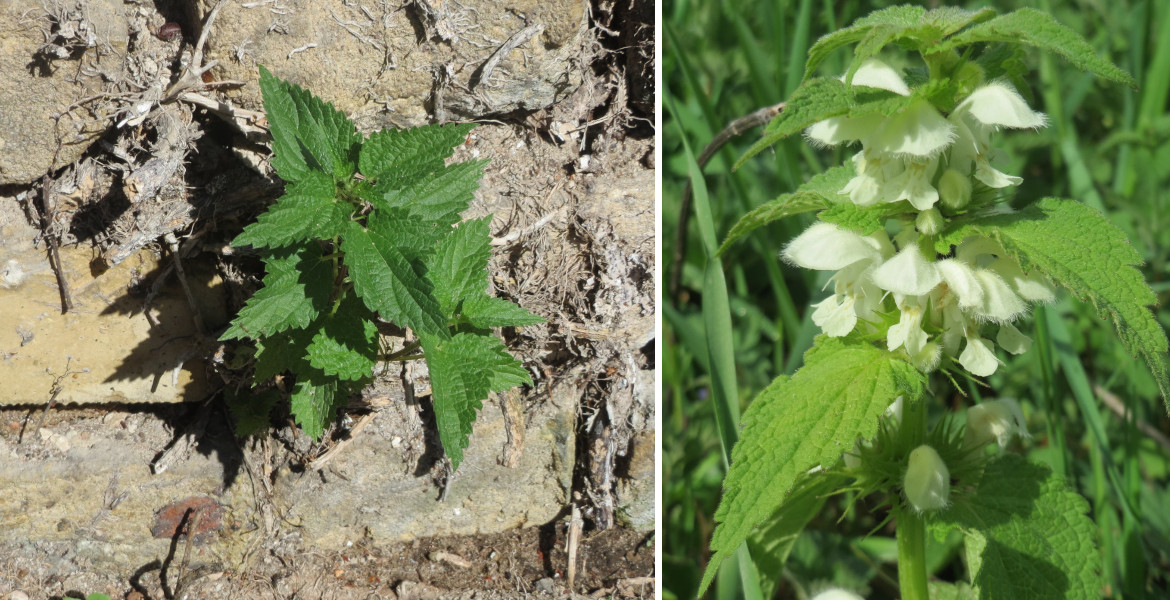
Water avens (Geum rivale)
Harvested: April to October
The herb is said to have gotten its Swedish name humleblomster (bumblebee flower) because the flower mimics the hindquarters of a bumblebee. The flower grows throughout the country and is part of the Dianthus genus, which means it can be confused with carnation, which is not poisonous. Carnation, on the other hand, has yellow flowers, while hop flowers are more purple-brown in color. It usually grows in wetter areas. The root, which is best picked in spring, has a sweetish flavor and can be used to make a chocolatey drink by peeling the root and placing it in a saucepan filled with water. Bring to the boil, then remove from the pan and leave to stand for 20 to 30 minutes, then strain out the roots and add sugar and hot milk. The shoots can be eaten fresh and the flowers are great for decorating salads, for example. The leaves can be added to a soup or used in stews.
Traditionally, a decoction of the root has been used internally for chills, fever, diarrhea, and intestinal and stomach issues. Externally, it has been used to treat various skin conditions such as blotchy skin, acne, and freckles. In folk medicine, the root has also been used for its anti-inflammatory, antiseptic, and astringent properties.
